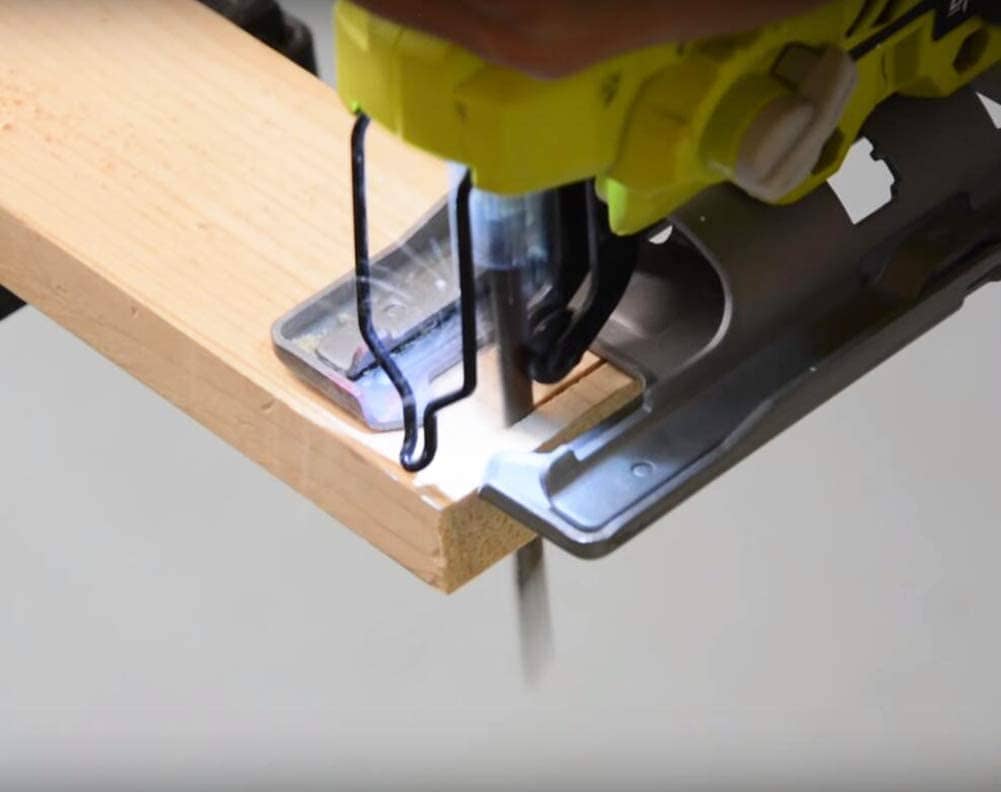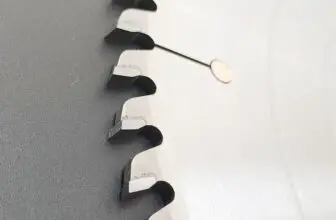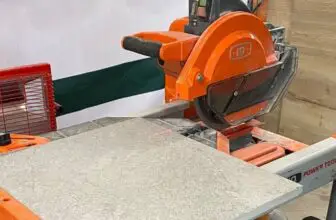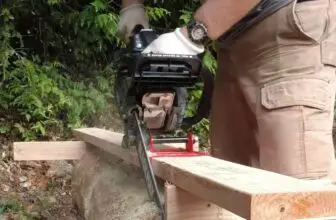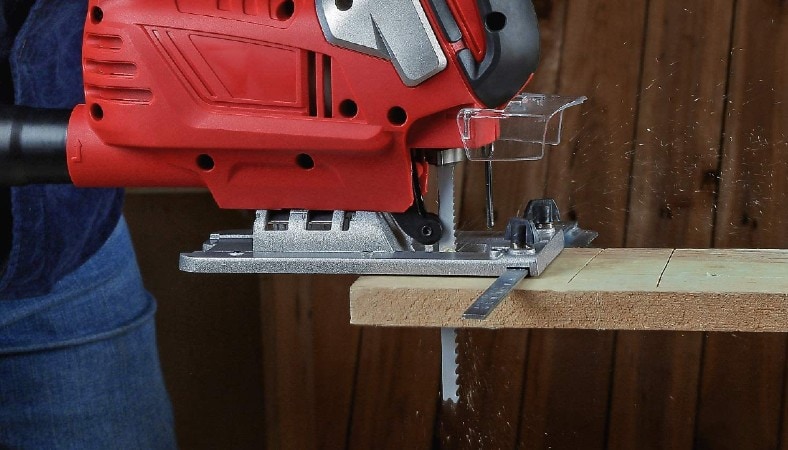
A jigsaw blade is an essential part of a jigsaw used for cutting curves and straight lines on various materials. A jigsaw blade is constructed of a series of toothed metal plates hardened to withstand the cutting action. The teeth are kept sharp by the blade being drawn through a grinding wheel.
Jigsaw blades are not the same. They are made to cut different types of materials. For example, a jigsaw blade used for cutting metal would not work for cutting wood. The teeth on each blade are designed for a specific type of material.
Before purchasing a jigsaw blade, it is important to identify the type of material you plan to cut with your saw. Luckily, the packaging for most jigsaw blades will identify the material type.
How to Choose a Jigsaw Blade – What’s the Difference?
Contents
Saw blades can be categorized by the material they are designed to cut, for example, wood, metal, or plastic. Their cutting function also categorizes saw blades. For example, a rip blade can be contrasted with a crosscut blade.
There are many different types of saw blades, and they can be used to cut a variety of different materials. And we are going to find out which is suitable for your purpose.
Blade Configuration
The blade on a jigsaw is one of the most important parts because it does the cutting. Without the correct blade, your jigsaw will not cut properly. There are two types of blades for a jigsaw, T-shank, and U-shank.
The U-shank blades were popular several years ago and were thought to be universal jigsaw blades. They are used for cutting wood, plywood, plastic, and other types of materials. The T-shank blade is better for cutting metal, fiberglass, and other hard materials.
The T-shank blade is designed with a tang at the top of the blade, making it very easy to change the blade in a toolless blade holder. The U-shank blade is designed with a cutout on the top of the blade and sometimes a hole. This makes it difficult to change the blade on a jigsaw.
So, T-shank blades are more common than U-shank blades because they are easy to use and replace and are compatible with most modern jigsaws.
Material
Here I will explain the different types of blade steel used for Jigsaw blades.
1. High-carbon steel (HCS)
Jigsaw blades come in a variety of shapes and sizes. The blades are made of different types of metal such as high-speed steel, high-carbon steel, bi-metal, or tungsten carbide. The materials that are used for the blade will determine the cutting that will be done.
High-carbon steel is the most common blade material. It’s durable and cuts through wood, metal, and plastic. High-carbon steel blades are made from a metal alloy consisting of carbon, manganese, silicon, and other compounds. These are used in most general-purpose blades.
High-carbon steel is a type of steel that is inexpensive and commonly used by hobbyists for woodworking and other projects. It is common because it is easy to sharpen and has a high resistance to wear.
2. High-speed steel (HSS)
High-speed steel is a lighter contemporary blade material than HCS, but it’s not as hard. They can be resharpened easily and are capable of cutting a variety of materials.
3. Bi-Metal (BIM)
Bi-metal blades are a combination of HCS and HSS to allow for flexibility and durability. They are more expensive than high-speed blades and more durable than steel blades.
4. Tungsten Carbide (TC)
Tungsten carbide is the hardest blade material available and can cut through anything, but it is not as durable as HCS. One of the benefits of this type of blade is that it can cut through any material, including metal.
Tungsten carbide blades are most often used for cutting concrete and stone. These blades are more expensive than other types of blades, but they are also much longer-lasting.
Jigsaw Blades FAQ
Do you still have questions? Check the section below to learn more about jigsaw blades.
What are the types of jigsaw blades?
The two main types of jigsaw blades are U-shanks or T-shanks. The U-shank blade is the older design of the two. It has a U-shaped shank that fits into a slot on the saw’s arbor. The T-shank blade is a more modern design and is easier and quicker to change.
Are T-shank and U-shank jigsaw blades interchangeable?
No, they are not interchangeable. The T-shank blade has a wider throat and a groove at the top of the blade, while the U-shank blade has a narrow throat. Therefore, it is necessary to buy a jigsaw blade that is suitable for your saw.
Do all jigsaw blades fit all jigsaws?
Not really. Depending on the manufacturer, there are different sizes of blades. There are also blades out there that are designed to cut wood, plastic, or metal, and some that are made for cutting curves in wood or metal. However, T-shaped jigsaw blades are compatible with most models of jigsaws.
Are all jigsaw blades the same?
No. There are different types of blades for different jobs. Some blades are for cutting wood, while others are for cutting metal, and some are for making curves. Some blades are designed for cutting clean, straight lines, while others are designed for cutting ornate patterns.
Conclusion
A saw is one of the most important tools in a carpenter’s arsenal. They are available in a range of sizes to match any job. This means you can cut solid wood, chipboard, plastics, PVC, MDF, and more, with ease. They are also available in a variety of materials – from stainless steel blades to blades with a carbon steel core.

